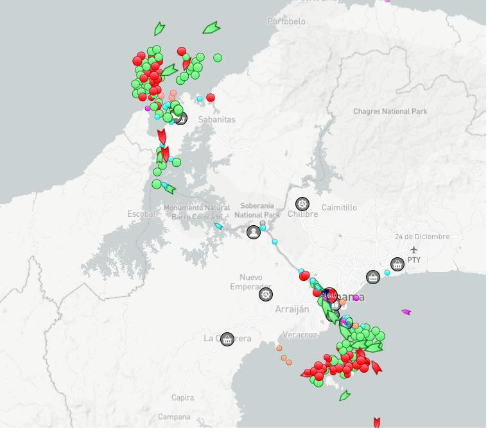"Panama's Precious Resource Drying Up: Urgent Newsflash on Low Water Crisis"
In this newsletter, we aim to keep you informed about the ongoing low water situation in the Panama Canal, its potential consequences, and the efforts being undertaken to address this critical issue. As water levels continue to impact global trade and local communities, staying informed is crucial. We hope this newsletter serves as a valuable source of information.
Understanding the Low Water Situation:The Panama Canal, a vital waterway connecting the Atlantic and Pacific Oceans, is facing a significant challenge due to lower-than-usual water levels. This phenomenon is attributed to changing weather patterns, including irregular rainfall and the impact of climate change, leading to a decreased inflow of water into the canal's watershed. The situation is affecting the navigational depth, thereby limiting the size and number of vessels that can transit the canal.
Impact on Global Trade:The Panama Canal plays apivotal role in global trade, facilitating the passage of countless ships carrying goods between continents. The current low water levels are causing concerns among shipping companies, as reduced navigational depths necessitate lighter loads for vessels. This limitation could lead to increased shipping costs, longer transit times, and potential rerouting of ships, impacting supply chains and global trade flows. The authorities overseeing the Panama Canal recently implemented a significant change in its operations. They made the decision to reduce the number of transits through the canal to just 32 per day, a notable shift from previous norms. Among these, 10 transits now take place at the neo-panamax locks, while the remaining 22 are accommodated by the Panamax locks. This strategic move was made with the intention of reducing the overall volume passing through the canal, effectively resulting in a 20% decrease in traffic.As a direct consequence of this decision, there has been a noticeable increase in wait times for vessels before they can make their transits. In some extreme cases, waiting periods have extended to as much as five days, a stark contrast to the previous average waiting time of just two to three hours prior to the implementation of these restrictions. (Source: The Loadstar, 8th of August)

Understandably, container lines such as CMA CGM and Hapag-Lloyd have had to adapt swiftly to these challenging circumstances. In response to the canal's limitations, they have introduced canal transit surcharges, which vary in cost from $300 per twenty-foot equivalent unit (TEU) to $500 per TEU. This financial adjustment reflects the additional costs incurred due to the prolonged wait times and altered canal dynamics. (Source: The Loadstar, 14th of August)
Moreover, the impact of these changes has been felt throughout the shipping industry. Even renowned companies like Evergreen, with its state-of-the-art neo-panamax vessel, the Ever Max, have not been immune. To navigate the canal successfully, the Ever Max had to take the unusual step of offloading 1,400 containers from its cargo, a measure necessitated by low-water restrictions that are now part of the canal's operational landscape. These developments underscore the evolving challenges faced by maritime trade in the wake of these canal modifications.
Mitigation Strategies:Toaddress the low water situation, the Panama Canal Authority has implemented several mitigation strategies. These include water-saving measures such as optimizing lock operations, controlling water releases from the Gatun Lake, and investing in water conservation technologies. Additionally, discussions are underway with international partners to explore collaborative solutions that balance water usage and canal operations.
Spotlight: Canal Expansion Project:In light of the ongoing challenges, the Panama Canal Authority has expedited its plans for a canal expansion project. This initiative aims to enhance the canal's capacity and resilience by creating additional water storage areas, improving water management infrastructure, and implementing advanced forecasting technologies. The expansion project represents a forward-looking approach to ensure the canal's sustainability in the face of changing environmental conditions.

